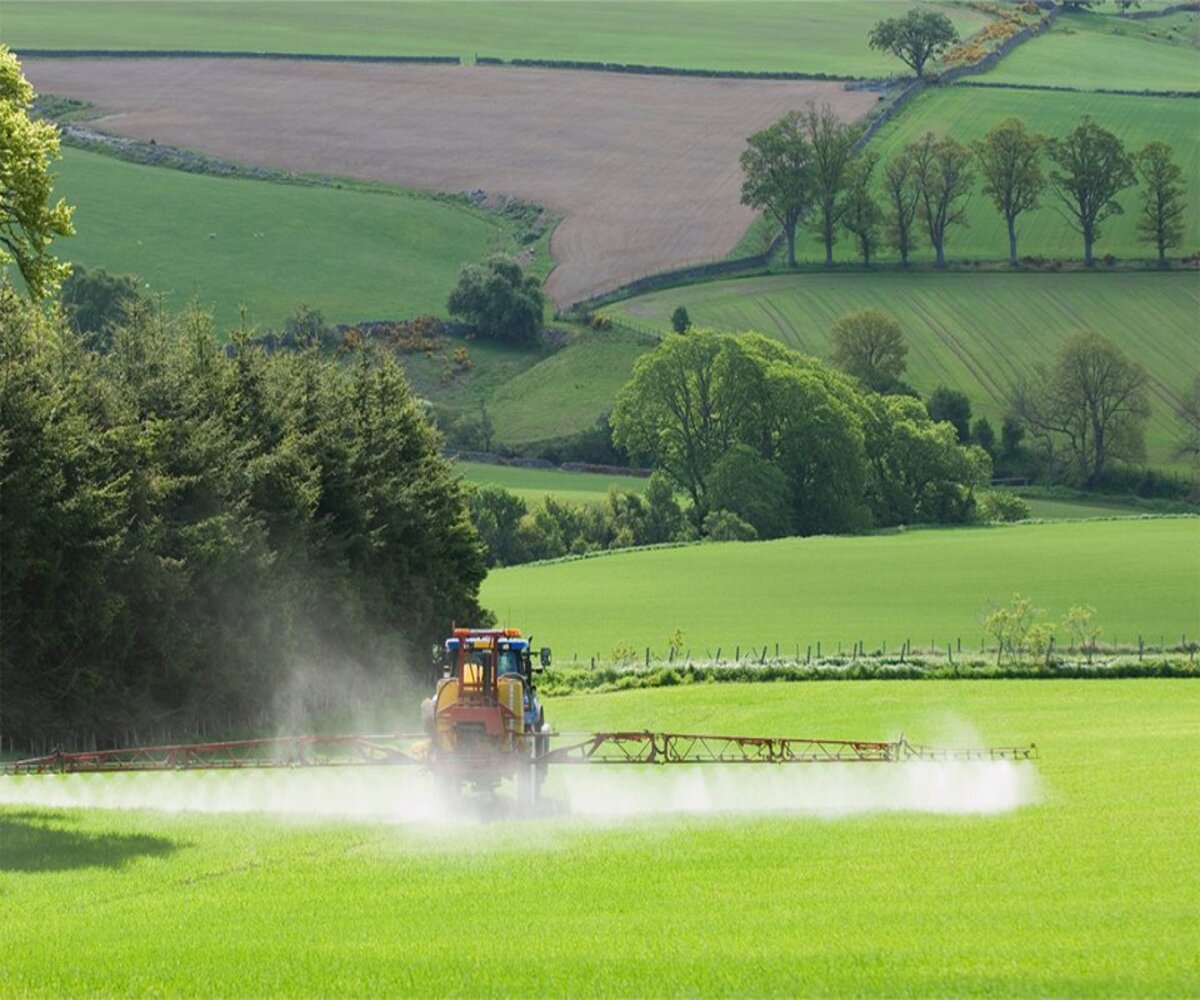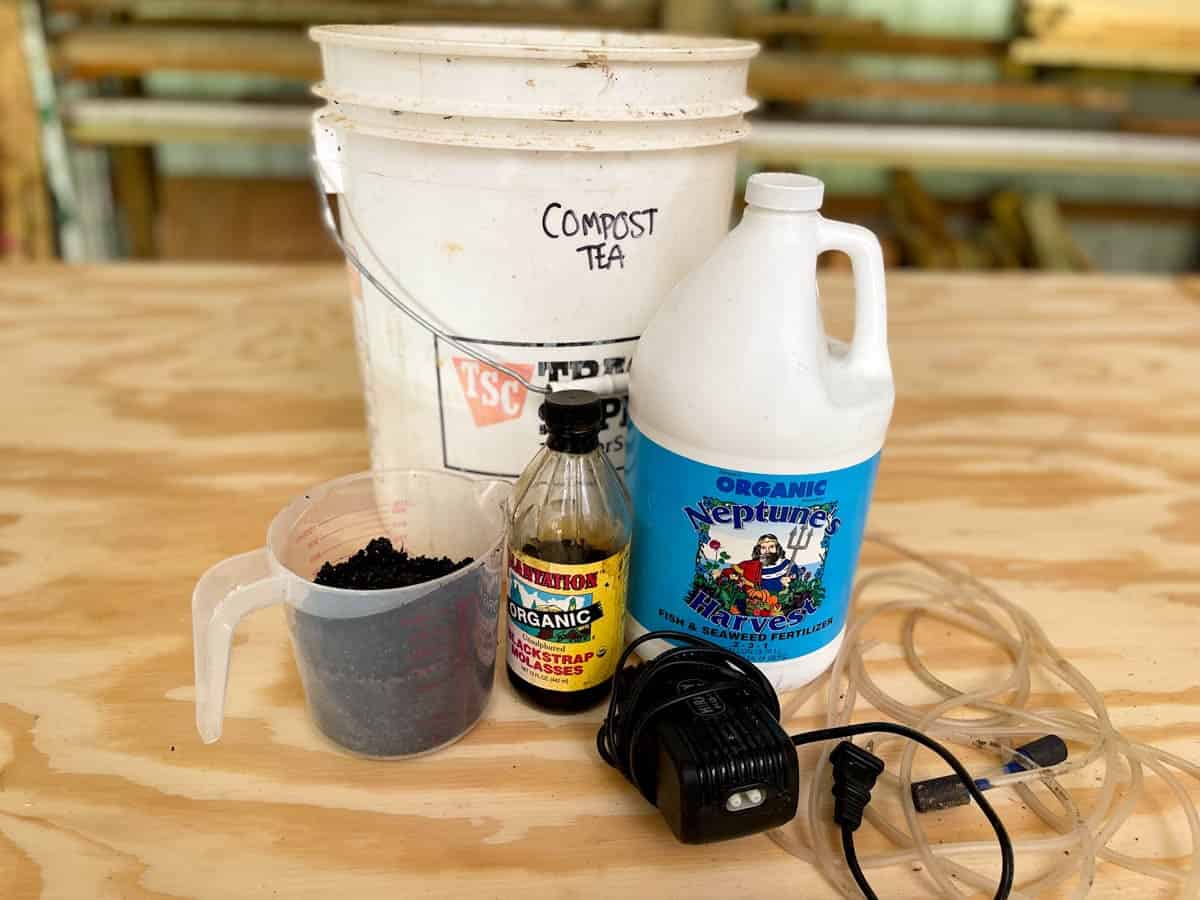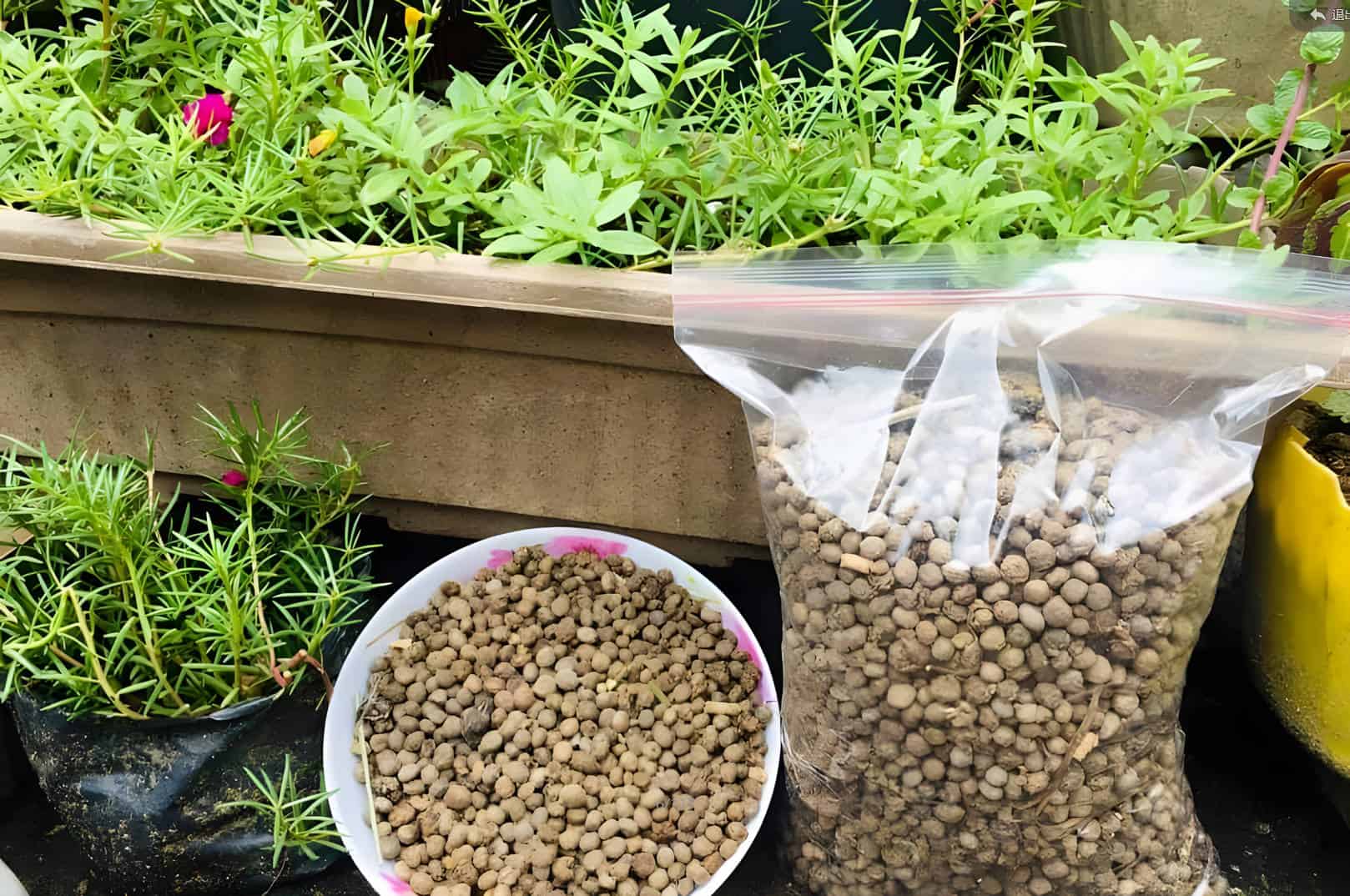Home>Gardening Tips and Tricks>How Much Fertilizer To Use Per Acre Of Pasture


Gardening Tips and Tricks
How Much Fertilizer To Use Per Acre Of Pasture
Modified: January 22, 2024
Discover the optimal amount of fertilizer per acre of pasture for maximizing yield. Uncover effective strategies to boost productivity and enhance your agricultural harvest.
(Many of the links in this article redirect to a specific reviewed product. Your purchase of these products through affiliate links helps to generate commission for Chicagolandgardening.com, at no extra cost. Learn more)
Table of Contents
Introduction
Welcome to our comprehensive guide on determining the ideal fertilizer application rates for your pasture land. Whether you are a seasoned farmer or just starting out, understanding the right amount of fertilizer to use is crucial for maximizing your pasture yield. By providing the necessary nutrients, fertilizers can help improve soil fertility, promote plant growth, and ultimately increase productivity.
However, determining the optimal fertilizer application rates is not a one-size-fits-all approach. It requires careful consideration of various factors, including soil composition, nutrient requirements, and specific environmental conditions. In this article, we will delve into the key factors that affect fertilizer application rates and the steps you can take to calculate the appropriate amounts for your pasture.
Before we dive into the specifics, it’s important to note that excessive or inadequate fertilizer application can have negative consequences. Over-fertilization may lead to nutrient runoff, groundwater contamination, and environmental damage, while under-fertilization can result in nutrient deficiencies and reduced yields. Therefore, finding the right balance is essential for sustainable and productive pasture management.
Throughout this guide, we will explore how soil testing and nutrient requirements, fertilizer types and formulations, and organic fertilizers each play a vital role in determining the appropriate fertilizer application rates. We will also provide best practices for applying fertilizers to ensure that you achieve optimal results while minimizing negative environmental impact.
By the end of this article, you will have a solid understanding of the factors influencing fertilizer application rates for your pasture and be equipped with the knowledge to make informed decisions that will help you maximize your yield and promote healthy growth. So, let’s get started!
Factors Affecting Fertilizer Application Rates
Several factors come into play when determining the appropriate fertilizer application rates for your pasture. By considering these factors, you can ensure that your fertilizer usage is tailored to meet the specific needs of your soil and plants, leading to improved growth and increased yield. Let’s explore the key factors:
- Soil Composition: The composition of your soil, including its texture, organic matter content, and pH level, can greatly influence the amount of fertilizer needed. Sandy soils, for example, tend to have lower nutrient-holding capacity and may require higher fertilizer application rates compared to clay soils. Conducting a soil test will provide valuable insights into your soil’s nutrient content and pH level, helping you determine the appropriate fertilizer ratios.
- Nutrient Requirements: Different plants have varying nutrient requirements. It is crucial to identify the specific nutrient needs of your pasture grass or forage crops. Nitrogen, phosphorus, and potassium are among the primary macronutrients needed for plant growth, along with secondary macronutrients like calcium and magnesium. Micronutrients, such as iron, manganese, and zinc, are also essential in smaller quantities. Understanding the nutrient requirements of your pasture plants will assist in fine-tuning your fertilizer application rates.
- Plant Growth Stage: The growth stage of your pasture plants is an important consideration. During periods of active growth, plants require higher nutrient inputs to support their development. For example, during the spring when grasses are entering the growing season, higher nitrogen application rates may be necessary. Adjusting your fertilizer application rates according to the growth stage of your plants will help optimize nutrient uptake and utilization.
- Environmental Conditions: Environmental factors, such as temperature, rainfall, and sunlight, can impact nutrient availability and plant growth. High precipitation can result in nutrient leaching, leading to a greater need for replenishing nutrients through fertilizer application. Similarly, warmer temperatures can increase nutrient uptake rates, requiring adjustments in application rates. It is important to keep an eye on weather patterns and adapt your fertilizer practices accordingly.
- Desired Yield: The desired yield and productivity goals for your pasture also play a significant role in determining fertilizer application rates. Higher yield targets may necessitate increased nutrient inputs to support enhanced growth and biomass production. By defining your yield goals, you can tailor your fertilizer application rates to reach your desired outcomes.
By carefully considering these factors, you can optimize your fertilizer application rates for your pasture, ensuring that nutrients are supplied in the right quantities at the right time. Understanding the specific needs of your soil, plants, and environment allows for targeted nutrient management, leading to improved productivity and sustainable farming practices.
Soil Testing and Nutrient Requirements
Soil testing is a crucial step in determining the nutrient requirements for your pasture. It provides valuable information about the current nutrient levels and pH of your soil, allowing you to make informed decisions about fertilizer application rates. By understanding the nutrient composition of your soil, you can adjust your fertilizer practices to meet the specific needs of your plants. Here’s how soil testing and nutrient requirements are interconnected:
1. Conducting a Soil Test: Start by obtaining a representative soil sample from your pasture. Soil samples should be collected from multiple areas within your field, combined, and sent to a reputable soil testing laboratory. These labs analyze the samples to determine nutrient levels, soil pH, and other important parameters.
2. Interpretation of Soil Test Results: Once you receive the soil test results, you can interpret the data to understand your soil’s nutrient status. The report will provide information about the levels of macronutrients like nitrogen, phosphorus, and potassium, as well as micronutrients and soil pH. These results will help guide your fertilizer application decisions.
3. Adjusting Nutrient Inputs: Based on the soil test results, you can identify specific nutrient deficiencies or excesses in your soil. For example, if the soil test reveals low phosphorus levels, you may need to incorporate a phosphorus-rich fertilizer into your application plan. On the other hand, if the soil shows excessive potassium, you can reduce the potassium-containing fertilizers. Tailoring your fertilizer inputs to address specific nutrient imbalances ensures efficient nutrient utilization and avoids unnecessary costs or potential environmental issues.
4. Accounting for Nutrient Availability: Soil pH plays a crucial role in nutrient availability. Some nutrients are more readily available to plants in certain pH ranges. For instance, acidic soils may have an increased availability of iron and manganese, while alkaline soils may have better access to phosphorus. Adjusting soil pH through lime or sulfur applications can help optimize nutrient availability. By understanding these relationships, you can fine-tune your fertilizer application rates accordingly.
5. Repeating Soil Tests: Soil conditions can change over time due to various factors, including management practices and crop uptake. Therefore, it is important to periodically conduct soil tests to monitor nutrient levels and make necessary adjustments to your fertilizer application rates. Regular testing ensures that you maintain a balanced nutrient supply to meet the changing demands of your pasture.
By regularly conducting soil tests and interpreting the results, you can effectively manage the nutrient requirements of your pasture. The insights gained from soil testing enable you to make informed decisions about fertilizer application rates, resulting in improved plant health, increased yield, and enhanced soil fertility.
Fertilizer Types and Formulations
When it comes to fertilizers, there are various types and formulations available on the market. Understanding the differences between these options is crucial for determining the most suitable fertilizer for your pasture. Here’s a breakdown of the common fertilizer types and formulations:
1. Complete Fertilizers: Complete fertilizers contain all three primary macronutrients – nitrogen (N), phosphorus (P), and potassium (K). They are labeled with a three-number ratio, such as 10-10-10 or 20-10-10, indicating the percentage of each nutrient in the formulation. Complete fertilizers are versatile and provide a balanced nutrient supply, making them suitable for general use in pastures.
2. Straight Fertilizers: Straight fertilizers consist of a single nutrient. For example, urea is a common straight fertilizer with a high nitrogen content. Straight fertilizers are useful if you have identified a specific nutrient deficiency based on a soil test. By using straight fertilizers, you can apply nutrients in the desired ratio without overloading the soil with unnecessary elements.
3. Controlled-Release Fertilizers: Controlled-release fertilizers are designed to gradually release nutrients over an extended period. They come in various forms, including coated granules or prills. These fertilizers provide a steady supply of nutrients to the plants, reducing the risk of nutrient leaching and optimizing nutrient uptake efficiency. Controlled-release fertilizers are particularly beneficial in areas with high rainfall or in situations where frequent applications are not feasible.
4. Organic Fertilizers: Organic fertilizers are derived from natural sources such as animal manure, compost, or plant materials. They provide a slow-release source of nutrients and help improve soil structure and microbial activity. Organic fertilizers are typically lower in nutrient concentration compared to synthetic fertilizers but offer the added benefit of enhancing soil health and long-term sustainability.
5. Liquid Fertilizers: Liquid fertilizers come in liquid form and are applied through irrigation systems or foliar spraying. They provide a quick and readily available nutrient supply to plants, making them advantageous when immediate nutrient uptake is required. Liquid fertilizers are also suitable for precision applications, enabling targeted nutrient delivery to specific areas of the pasture.
When selecting the appropriate fertilizer type and formulation for your pasture, consider factors such as nutrient requirements, soil conditions, application method, and environmental considerations. It’s important to read and follow the manufacturer’s instructions and guidelines to ensure proper and effective application.
Remember, choosing the right fertilizer is just the first step. Next, we’ll explore how to calculate the ideal fertilizer application rates for your pasture based on soil tests and nutrient requirements.
Calculating Fertilizer Application Rates
Accurately calculating the fertilizer application rates for your pasture is essential for providing the correct amount of nutrients to promote healthy plant growth and optimize yield. Here are the steps to calculate the ideal fertilizer application rates:
1. Determine Nutrient Requirements: Start by analyzing the soil test results and identifying any nutrient deficiencies or imbalances that need to be addressed. Refer to recommended nutrient ranges for your specific pasture grass or forage crops. These ranges can be obtained from agricultural extension services or local soil testing laboratories.
2. Adjust for Current Nutrient Levels: Take into account the existing nutrient levels in your soil. If the soil test indicates adequate levels of a particular nutrient, you may need to adjust the application rate to maintain a balanced nutrient supply. On the other hand, if the nutrient levels are below the optimal range, you will need to increase the application rate to rectify the deficiency.
3. Consider Fertilizer Analysis: For each fertilizer type you plan to use, note the percentage of the desired nutrient(s) in the formulation. This information is typically provided on the product label. For example, if you are using a 10-10-10 complete fertilizer and your desired nitrogen application rate is 100 pounds per acre, you know that you will need to apply 1000 pounds (100 ÷ 0.10) of the 10-10-10 fertilizer per acre.
4. Account for Fertilizer Efficiency: Not all of the applied fertilizer will be available to plants. Factors such as soil type, environmental conditions, and fertilizer type can affect nutrient availability. Consider adjusting the application rate to account for fertilizer efficiency. This adjustment is typically based on the specific recommendation for the fertilizer type and the crop you are growing.
5. Calculate the Application Rate: Once you have gathered the necessary information, you can calculate the fertilizer application rate. Divide the desired nutrient application rate (in pounds per acre) by the percentage of the nutrient in the fertilizer. This will give you the total amount of fertilizer (in pounds) needed per acre.
6. Consider Spreader Calibration: Depending on the type of fertilizer spreader you are using, it may be necessary to calibrate the equipment to ensure accurate application. Spreader calibration involves determining the spread width and adjusting the settings to achieve the desired application rate. Consult the manufacturer’s guidelines for calibration instructions specific to your spreader.
Remember, it is important to consider soil and climate conditions when calculating fertilizer application rates since they can impact nutrient availability and plant response. Regular soil testing and adjustments to application rates are necessary to maintain the desired nutrient levels over time.
By following these steps and making informed decisions, you can calculate and apply the appropriate amount of fertilizer to optimize nutrient availability and promote healthy pasture growth.
Considerations for Organic Fertilizers
Organic fertilizers offer a natural and sustainable approach to enriching the soil and providing essential nutrients to your pasture. As you consider using organic fertilizers, there are several factors to keep in mind. Understanding these considerations will help you maximize the benefits of organic fertilizers and ensure successful pasture management:
1. Nutrient Content and Release: Organic fertilizers, such as compost or animal manure, have lower nutrient concentrations compared to synthetic fertilizers. It is important to consider the nutrient content of the organic material and adjust the application rate accordingly. Organic fertilizers also release nutrients more gradually, providing a slow-release source of nutrition for your plants. This can help minimize the risk of nutrient leaching and promote long-term soil health.
2. Nutrient Imbalance: Depending on the source of the organic fertilizer, it may have a different nutrient profile compared to synthetic fertilizers. For example, manure-based fertilizers tend to be higher in nitrogen and phosphorus. It is crucial to account for these nutrient imbalances and adjust your application rates to achieve a proper nutrient ratio for your pasture’s specific requirements.
3. Organic Matter and Soil Health: Organic fertilizers not only supply nutrients but also contribute to improving soil structure and increasing organic matter content. This can enhance the soil’s water-holding capacity, nutrient retention, and microbial activity. The gradual breakdown of organic matter also releases additional nutrients over time. Prioritize the use of compost or well-decomposed organic materials to ensure the best results in terms of soil health and fertility.
4. Application Timing and Methods: Organic fertilizers often require a longer period for nutrient release and conversion by soil microorganisms. It is important to plan your application timing to allow for adequate decomposition and nutrient availability when the plants need them the most. Incorporating organic fertilizers into the soil can also improve nutrient distribution and minimize nutrient losses due to runoff or volatilization.
5. Source and Quality Assurance: It is essential to source organic fertilizers from reputable suppliers to ensure their quality and avoid potential contamination issues. Certification standards, such as those for organic farming, can provide additional assurance about the origin and production practices of organic fertilizers.
6. Regulatory Compliance: Depending on your location, there may be regulations or guidelines regarding the use of organic fertilizers. Familiarize yourself with local regulations to ensure compliance and responsible use of organic fertilizers on your pasture.
By considering these factors, you can effectively utilize organic fertilizers and harness their benefits for your pasture. Remember to monitor nutrient levels, adjust application rates as needed, and combine the use of organic fertilizers with other sustainable management practices to optimize soil health and yield.
Best Practices for Fertilizer Application
Proper fertilizer application techniques are crucial to maximize nutrient uptake, minimize waste, and minimize potential environmental impacts. By following these best practices, you can ensure effective and responsible fertilizer application for your pasture:
1. Follow Soil Test Recommendations: Base your fertilizer selection and application rates on the results of a comprehensive soil test. Soil tests provide insights into nutrient deficiencies, imbalances, and pH levels, helping you tailor your fertilizer application to meet your pasture’s specific needs.
2. Calibrate Equipment: Regularly calibrate your fertilizer spreader or applicator to ensure accurate and consistent application rates. Proper calibration ensures uniform coverage and prevents over or under-application of fertilizers, optimizing nutrient distribution across the pasture.
3. Apply at the Right Time: Apply fertilizers when plants are actively growing and can readily take up the nutrients. Consider factors like the weather, plant growth stage, and expected rainfall to determine the best timing for fertilizer application. Avoid applying fertilizers during periods of heavy rainfall, which can result in nutrient runoff and waste.
4. Incorporate Fertilizers: Whenever possible, incorporate fertilizers into the soil to enhance nutrient contact with plant roots. Incorporation also helps reduce nutrient losses through volatilization or runoff. Use tillage or other appropriate methods to work the fertilizer into the topsoil layer.
5. Use Split Applications: Consider splitting your fertilizer applications into multiple smaller doses throughout the growing season. This approach provides a more consistent nutrient supply to the plants and reduces the risk of nutrient losses. It also allows for adjustments based on plant nutrient uptake patterns and changing environmental conditions.
6. Avoid Over-fertilization: Applying excessive amounts of fertilizer not only wastes resources but can also harm the environment. Over-fertilization can lead to nutrient runoff into water bodies, causing pollution and harmful algal blooms. Follow recommended application rates and consider the nutrient requirements of your pasture to avoid over-fertilization.
7. Monitor Plant Response: Regularly monitor the response of your plants to fertilizer applications. Observe for symptoms of nutrient deficiencies or toxicities. Adjust your fertilizer practices if necessary, taking into account plant health, growth rate, and yield to fine-tune your nutrient management strategy.
8. Maintain Proper Storage and Handling: Store fertilizers in a cool, dry, and secure area to prevent nutrient loss and avoid spillage or contamination. Follow guidelines for safe handling, storage, and disposal of fertilizers to ensure the safety of both the environment and individuals involved in the application process.
9. Rinse Equipment Thoroughly: After fertilizer application, rinse your equipment thoroughly to remove any residue and prevent the buildup of corrosive materials. Proper equipment maintenance helps extend its lifespan and ensures accurate application in future uses.
10. Stay Informed: Stay updated on the latest research, best practices, and regulations related to fertilizer application. Attend workshops, seek advice from agricultural experts, and keep an eye on relevant publications to stay informed about advancements and recommendations in fertilizer management.
By following these best practices, you can optimize the effectiveness and environmental sustainability of fertilizer application for your pasture. Responsible fertilizer use not only promotes healthy plant growth and enhances yield but also minimizes negative impacts on soil, water, and air quality.
Conclusion
Maximizing the yield of your pasture through effective fertilizer application requires a comprehensive understanding of various factors, including soil composition, nutrient requirements, fertilizer types, and application techniques. By considering these elements and following best practices, you can optimize nutrient availability, promote healthy plant growth, and ultimately increase your pasture’s productivity.
Start by conducting a soil test to determine your soil’s nutrient status and pH levels. Soil testing provides valuable insights into the specific nutrient requirements of your pasture and helps you tailor your fertilizer application rates accordingly. Consider factors such as plant growth stage, environmental conditions, and desired yield goals to fine-tune your nutrient management strategy.
When selecting fertilizers, choose the appropriate type and formulation based on your nutrient requirements and soil conditions. Complete fertilizers provide a balanced nutrient supply, while straight and organic fertilizers address specific nutrient deficiencies and promote long-term soil health. Calibration of equipment is crucial to ensure accurate and uniform fertilizer application across your pasture.
By following best practices such as applying fertilizers at the right time, incorporating them into the soil, and avoiding over-fertilization, you can minimize nutrient losses and reduce environmental impacts. Splitting applications and monitoring plant response allow for adjustments based on nutrient uptake patterns and changing conditions.
Ultimately, responsible fertilizer application is a key component of sustainable pasture management. By properly managing fertilizer inputs, you can optimize nutrient utilization, promote soil health, and contribute to the long-term productivity and sustainability of your pasture.
Remember to stay informed about the latest research, guidelines, and regulations related to fertilizer application. Regular soil testing, ongoing monitoring of plant response, and adapting your practices as needed are essential for successful fertilizer management. With careful attention to these principles, you can maximize the yield of your pasture, promote soil fertility, and foster a healthy, flourishing ecosystem.










